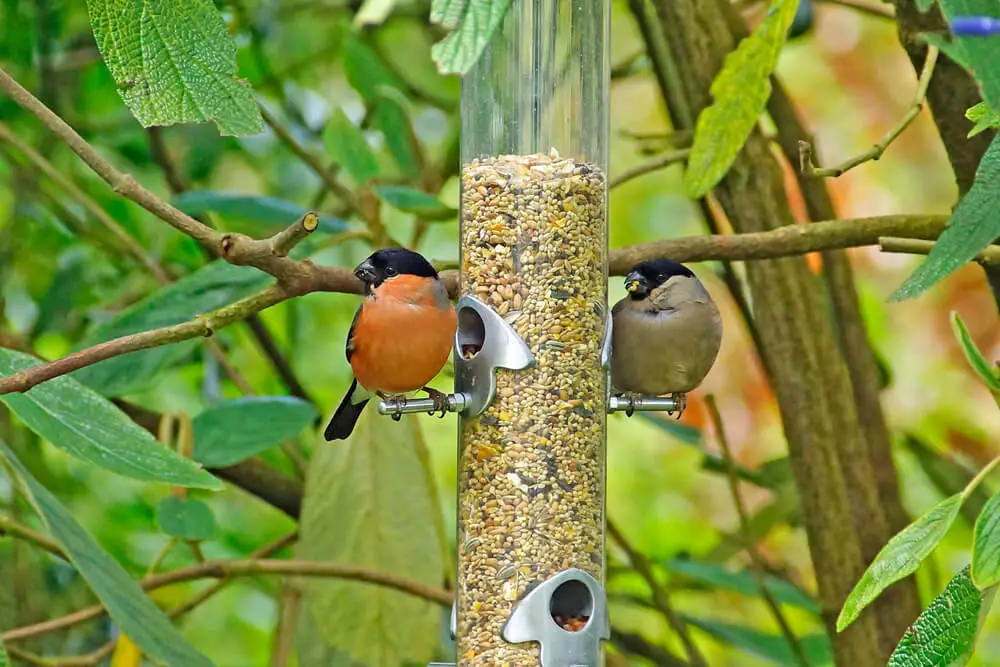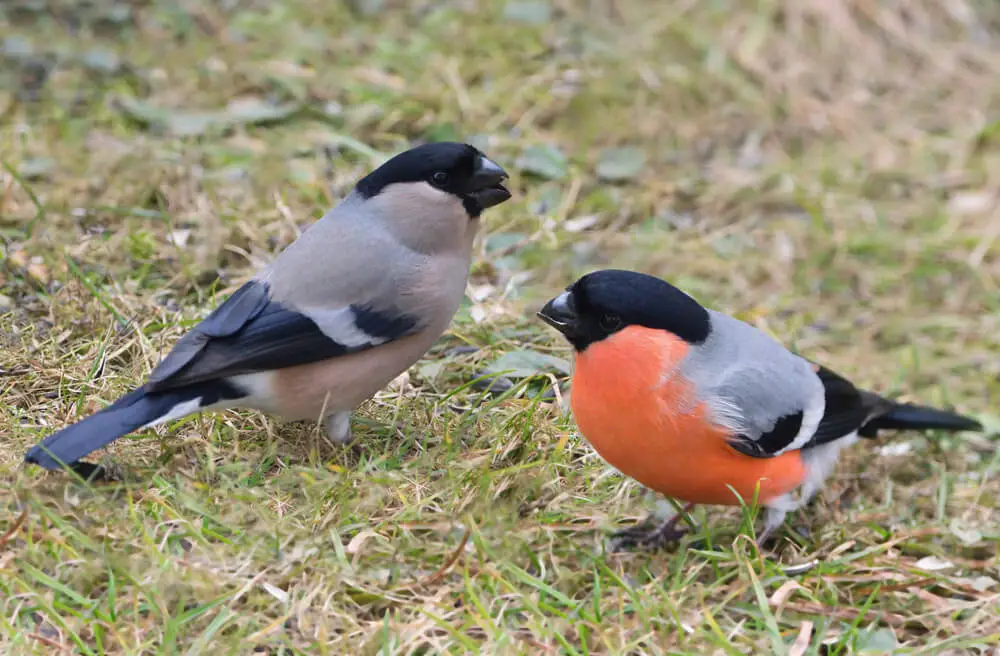Attracting any type of bird usually involves offering them some of their favourite foods and a safe place to shelter. While this is similar for the bullfinch, you are less likely to see them unless your garden meets certain criteria.
They are incredibly shy birds that prefer to hide in deciduous woodland with dense undergrowth. If your garden has lots of trees and shrubbery, you are more likely to have bullfinch visitors.
Studies undertaken by the BTO – British Trust for Ornithology show that bullfinches only visit around 10% of British gardens, even though their population is widespread across most of the country. Although you might need to be patient, it is possible to attract bullfinches to your garden.

Bullfinches won’t use bird boxes and rarely build their nests in a garden unless it is in a very rural setting with lots of trees, hedgerows, and shrubbery.
Fruit trees appeal to them; for their buds in early spring and fruit and berries later in the year. Try planting a young tree to see if the bullfinches notice.
They are partial to sunflower seeds, either whole or shelled hearts. Hang a few feeders or sprinkle some on a feeding table close to some shrubbery or a hedge, you might entice them to break cover.
Suet is another useful and taste treat that bullfinches enjoy.
Table of Contents
Will bullfinches nest in my garden
If you’re lucky enough to have an expansive garden with lots of heavy planting – shrubs, bushes, and trees, then bullfinches might use it as their nesting site.Bird boxes are a waste of time, but a tall hedgerow might pique their interest.
Bullfinches are passerines – birds with claws designed for perching, including all songbirds.
When they come to rest, they will choose a site with plenty of safe perching spots where they can go unnoticed.
Hedges and shrubs are perfect hiding places, especially if near to a good food source.

Which foods attract bullfinches?
The best way to win a bird over is by offering them their favourite titbits.
The majority of a bullfinch’s diet consists of tree buds, shoots, seeds, and flowers. When they’re out of season, the birds are tempted to look into gardens for any feeding table treats.
Sunflowers seeds are their favourites; they have strong bills to crack the shells. They also enjoy sunflower hearts; I prefer to feed these as they leave less mess beneath the feeding station.
Even though the bullfinch is quite a stocky bird, they are still agile and find it equally as easy eating from hanging feeders as they do pecking from a table.
They are also partial to suet and eat in a block, ball, or pellet form. If you make your own, add lots of seeds and berries to appeal to their sweet-tooth nature.
Mixed seed is another food bullfinches head for; try and buy better quality seed. Less expensive types are often filled out with millet as it’s cheaper but less nutritious.
Grow an orchard!
Bullfinches are notorious for their love of fruit trees and their buds, so much so that a flock can decimate a large orchard in a matter of hours.
Perhaps not such a good idea if you only want to spot the occasional bird!
Plant hedgerows
You might already have the occasional bullfinch visitor if you live on the border of woodland or in a rural area,
To encourage them to visit frequently, provide them with somewhere to hide from danger. Hedges are ideal and usually grow quickly. Bullfinches prefer to be at least 4ft from the ground.
Cherry laurel and beech are fast-growing, deciduous hedges, while fuchsia bushes form a decorative hedgerow. Not only do they provide ideal roosting spots for the birds, but they also become insect habitats. Bullfinches feed their young on these invertebrates in the breeding season.
Add a birdbath
Songbirds are always on the lookout for somewhere to wash. Birdbaths are dual-purpose, the birds have somewhere to bathe before preening, and they are a source of fresh drinking water.
Bullfinches are small birds and are intimidated by fast running water or open lakes; a small birdbath near dense hedges is perfect.
They only need to drink a couple of times a day; just remember to keep it clean.
Final thoughts
Although there are over a million breeding pairs of bullfinches in Britain, their population remains a cause for concern.
As farming practices change and there becomes less natural habitat for them, we should see them relying more on our garden bird feeding tables.
If planting an orchard is a step too far, try sunflower seeds and suet to attract bullfinches to your garden. Be patient, and unless you live in a busy urban city, there is a good chance you might see some of the colourful little guys.

Cherry laurel is a non-native invasive species that outcompetes and poisons native plants with the cyanide it releases into the soil. It is highly invasive and difficult to eradicate where it takes hold. Though it may offer some benefits to bullfinches, I would argue this is not enough to justify recommending people plant it in their gardens. If people want to help our floundering wildlife, they should be removing laurel from their gardens.